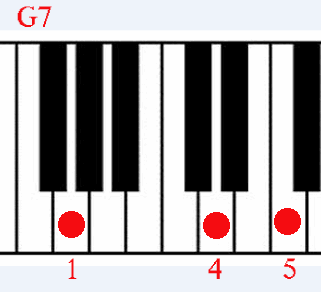Rhythm time! ... https://postbox22.com/rhythm
Rhythm time!
Skip fingering
Music notation in this book is the same as it is for other music books except for the numbering of fingers on the left hand. Most books about playing keyboard instruments number the fingers of the left hand from right to left, with the thumb as finger one and the little finger as 5. They number keys played by the left hand from right to left. This book often numbers the fingers of the left hand from left to right, with the little finger as one and the thumb as 5.
If somebody is asked to write the first three letters of the alphabet, they usually write A B C, not B C A. We read letters and numbers from left to right. If somebody is asked to read aloud the number 48, they read from left to right and answer forty eight.
When we name the keys of a piano for scales played with the right hand, we write A B C D E F G or 1 2 3 4 5 6 7. Keys played by the right hand are numbered left to right/ So often it is easier to note the fingers of the left hand from left to right - specially for beginners learning to play chords.
More advanced players number piano keys from left to right but the fingers of the left hand from right to left. That way each finger of the left hand has the same number as the same finger on the right hand. Both thumbs are numbered one.
Chord pictures in this book show keys numbered from left to right. The numbers show which fingers are to play which keys. Fingers of both hands are numbered left to right.

This book teaches open or skip fingering instead of closed or step fingering. Think of the fingers of the left hand and the keys of a piano as numbered left to right. Then the fingers numbers for say chord G7 are 1 2 3 4. Finger one plays note G, finger 2 skips a key to play note B, finger 3 does not play anything, finger 4 plays D and finger 5 skips to play F. The illustration of G7 on this page cuts the full chord to a triad.
Closed fingering, with the fingers close together, plays the notes G A B C and D, not a chord at all. Closed is good for playing scales.
Open fingering works as well for playing chords and notes with the right hand. Open fingering is good for playing melodies as it keeps the fingers over the right notes of any chord played with the first position.
Once somebody has learned a chord, they play it subconciously and instantly without thinking of letters or numbers.

